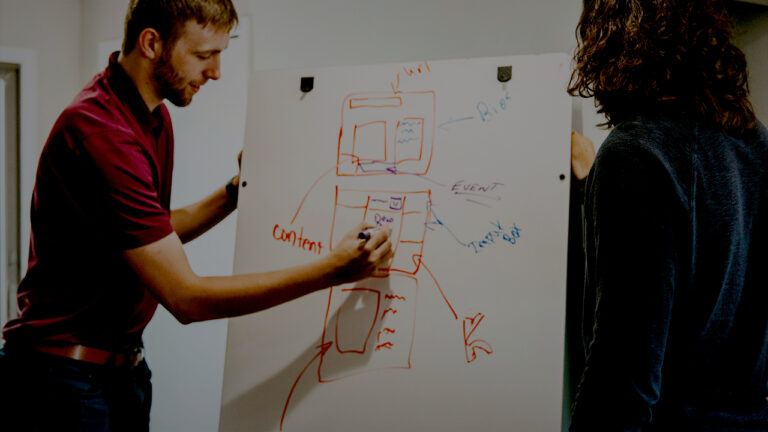It wasn’t too long ago when a qualitative research report would start with a disclaimer, almost an apology. It would say something like “the following report contains qualitative results that should be considered directional and only in conjunction with quantitative data … yadda yadda yadda.”
In other words: “Don’t believe a damn thing you are about to read in this report because it’s all garbage.” Back then, subjectivity was a prosecutable offense. And empathy was outright rejected. These were the days when we were still counting heads in focus groups to see how well a campaign was performing, or coding open ends in a survey and calling it qual.
We were human recording devices, regurgitating what people happened to say to us within the $75 worth of time where we had them locked in a room. Our job was to tell you ‘what we heard’. If most people liked the blue packaging over the red packaging, that is what we would tell you. If most people circled the ‘sad face’ instead of the ‘happy face’ after watching a new spot, we would tell you that too.
The tragic irony was that qualitative researchers did it to themselves. They avoided taking on the responsibility of having any direct impact on actual decisions made by actual brands. They willingly recused themselves from the creative process.
Things have changed and qualitative reports have evolved over the past few decades. They’ve moved from static to active, from an easily dismissed monochrome missive to a multidimensional transmedia dreamscape.
The first big shift forward was when insight became the crown jewel of research. Qual consultants discovered the value of making connections between observations. They began looking for themes and patterns across the data and noticing things like how a group of people felt about their lives might connect to how they engaged with the category. Mind blowing stuff, right?
The problem that arose with insights is that anyone could call anything an ‘insight’. And it became difficult to know which insights were the real deal and which were just fluff. That’s when storytelling began to emerge as a force. Ah, yes, storytelling… the romantic act of looking for connections between all these newfound insights and weaving them together into a comprehensive narrative.
As with insights, everyone in the industry now claims to be a ‘storyteller’, promising their clients not just a sequence of results but an engaging and moving narrative. One with a protagonist and an antagonist, a conflict, a resolution, and all the dramatic discourse in between.

Photo by Per Lööv on Unsplash
But we don’t think just telling stories cuts the mustard anymore. It’s not that we don’t believe in the act of storytelling or love a happy ending. It just means we don’t just tell stories for the sake of telling stories. We want to tell stories with teeth and stories with twists. Stories that make the hair on your skin stand straight up, in a good way.
Just as the industry evolved from basic observation to insight, then from insight to storytelling, we think it needs another big push forward. What we deliver to our clients must move beyond the act of narrative and observation to reveal something truly useful. We make this our mission every time we crack open a brief. Stories that aren’t just satisfying, but inspiring. And not just inspiring, but inciting.
We get there by mixing one part big idea with one part practical application: this is the big idea. The kind of idea that will compel you to turn off your phone during a debrief and furiously start taking notes. The kind that will force you to share those notes as soon as you walk out of the debrief.
Whether we are conducting an exploration, strategy or innovation project, the Sound Bite is the insight or idea that transcends the rest; a simple human truth about people, culture, and brands, that has the power to directly impact your business.
It requires going 30,000 feet up on the air, looking down on the story we’re working on, and asking ourselves what the fuck does this all mean? Not from a researcher’s point of view, or a strategists point of view or even from a brand’s point of view, but what does this mean for people?
To answer this, we draw from everything we know. From the research we’ve done, to what we’ve read online and off, to what we see on the streets, to what we observe during family dinners, to what we write in our thought pieces, and all the way down to the last shred of the last napkin where we scribbled some random thought when the project kicked off.
You can’t force it. It can’t be contrived or fabricated. It’s not easy, but it must be simple. It shouldn’t require big words to describe, or need intellectual acrobatics to navigate. It comes after we’ve done enough work to start to break the rules, when we flip the data upside down and begin to connect the dots in a counter-intuitive way, or when we’ve discovered a question the client didn’t know needed answering.
We only know we’ve landed on it when we get goosebumps up and down our arms. When we have our Matrix moment where all the data melts down to a pure epiphany. It usually takes the form of a simple human truth about people, culture, and brands, that has the power to directly impact our client’s business.
Sound advice?
This is the practicality part. It’s what gives our bite teeth. Because what good is an insight or a big idea without advice on how to make it actionable?
Here we identify the ‘so what’ for the companies we work with: the opportunities that exist for the brand paired with a realistic picture of the challenges the brand might experience if it were to move ahead.
We don’t sugar coat things, as our interest is always in what is best for the brand. Additionally, the Sound Advice shows our clients what the opportunity or solution actually looks like. We believe in developing a ‘vision for the future’ for clients to consider to help with what we were commissioned to do in the first place – inspire real action.


